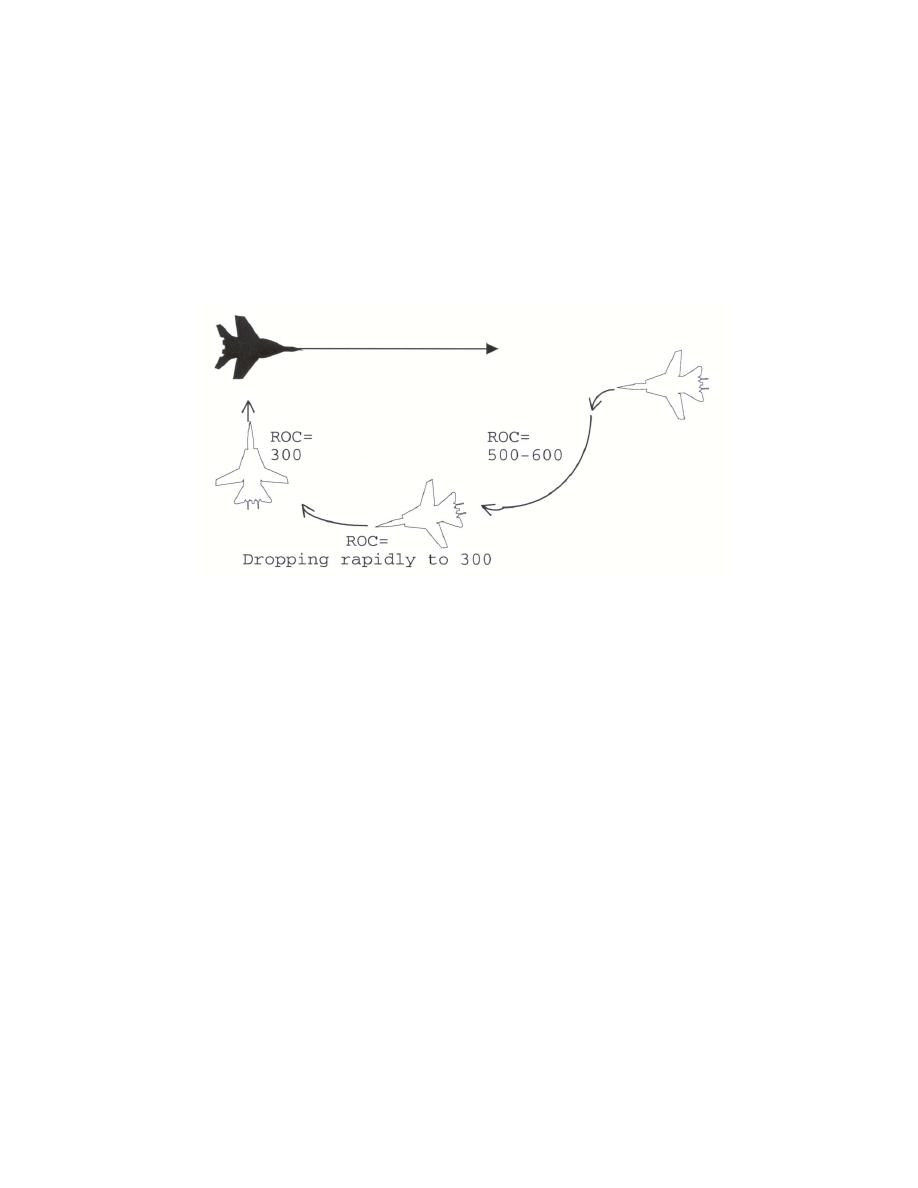 |
|||
|
|
|||
|
|
|||
| ||||||||||
|
|  INTERCEPT PROCEDURES TEXTBOOK
Interpreting the Rate of Closure (ROC)
After completing the DT, the scope display of ROC (in a track mode only), will normally be
approximately 500-600 kts. The ROC after DT is always lower than it was while on collision.
As the fighter progresses through the counterturn, the ROC will decrease slowly until it is zero,
as long as the aircraft are co-speed. When the bogey is on or near the fighter's nose, this is the
beam area. The transition from the forward quarter to the beam is indicated on the scope by a
more rapid drop in ROC. This ROC drop is a result of the ROC becoming more a function of the
fighter's airspeed as both aircraft are no longer heading directly at each other.
Figure 14
Compass Recovery
A compass recovery is a maneuver used to salvage the intercept when an extremely hot CT
has caused a lost contact. If a counterturn is hot due to misanalysis of TA, a late DT, running the
wrong CT or any combination of these, lateral separation will be lost with decreasing slant range
and high ROC. The fighter could overshoot the bogey's flight path and lose radar contact.
The weapons officer must be able to recognize a hot overshoot on the scope. The first
indication will be a bogey that is maintained on the hot side of the ideal drift curve for too long.
If brought to the nose too quickly, without checking the RMI to see how many DTG are still left,
the fighter might get the false impression that the 90 DTG position is reached. But, with closure
still very high, the bogey will rapidly drift off to one side of the scope and result in a lost contact
situation.
79
|
|
Privacy Statement - Press Release - Copyright Information. - Contact Us |